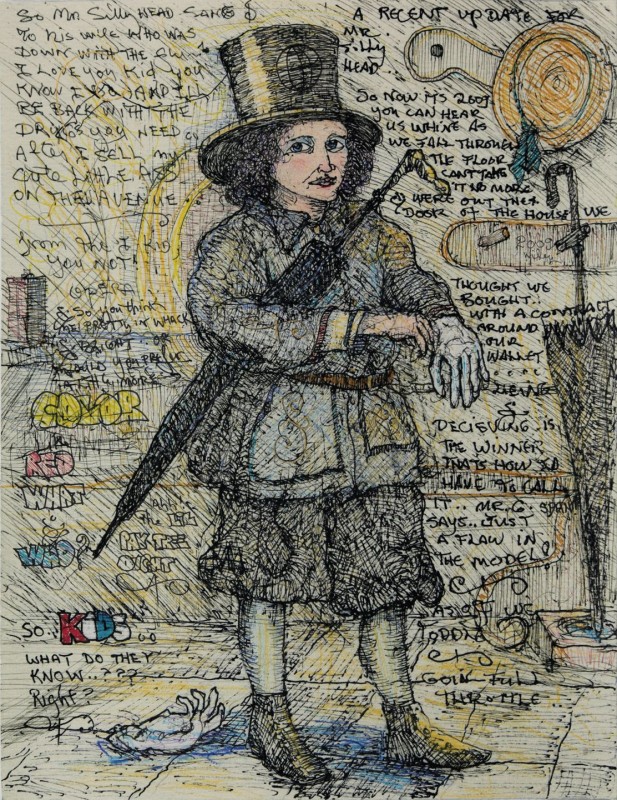
acrylic inkjet with watercolor and mixed media
26 x 20 in.
unique
Magnolia Editions is pleased to announce a new suite of unique mixed-media prints by William T. Wiley, a prolific creator whose work has retained an extraordinary degree of integrity and timeliness in the face of the shifts and drifts of artistic movements and global events. As curator JoAnn Moser points out in the catalog for the Smithsonian Museum of American Art’s retrospective “William T. Wiley: What’s It All Mean,” the art world’s recent revival of interest in drawing and unpretentious, personal art serves as an excellent climate in which to review and celebrate Wiley’s ever-growing body of work.
In an interview at Magnolia Editions, Wiley explains that the Sillyhead character is based on a found 19th century image, cast by the artist as a figure from his own past: “My wife, Mary Hull Webster, when she was a little girl, she and the next door neighbor decided they would be married and they would be Mr and Mrs Sillyhead. So she always tells me I’m not her first husband: ‘before you, there was Mr. Sillyhead.'”
Wiley created his first ink drawing of Mr Sillyhead in 1997, when Bill Clinton began his second term as president of the United States and the Labour Party toppled decades of conservatism in England. The 2009 Sillyhead series, however, finds our dandified hero confronted with a very different political and economic climate. Wiley’s text uses themes of youth and childhood to suggest both a loss of innocence and a newfound pragmatism. The waggish charm of Mr Sillyhead is offset in this new series by a bittersweet awareness of the machinations of the world around him. A resigned, sardonic kind of look he has here, Wiley says of Sillyhead: “he knows what it’s like out on the street.” As such, in addition to their shared love for Mary Hull Webster, Mr Sillyhead now has something else in common with the artist: as John Yau notes in the “What’s It All Mean” catalog, despite Wiley’s success, “[he] is deeply in touch with his times, and how haunting they can be.”
show prices
Prices and availability are subject to change without notice.The copyright of all art images belongs to the individual artists and Magnolia Editions, Inc.
©2003-2024 Magnolia Editions, Inc. All rights reserved. contact us
